Hydnellum peckii Banker - Devil's Tooth
Phylum: Basidiomycota - Class: Agaricomycetes - Order: Thelephorales - Family: Bankeraceae
Distribution - Taxonomic History - Etymology - Identification - Culinary Notes - Reference Sources
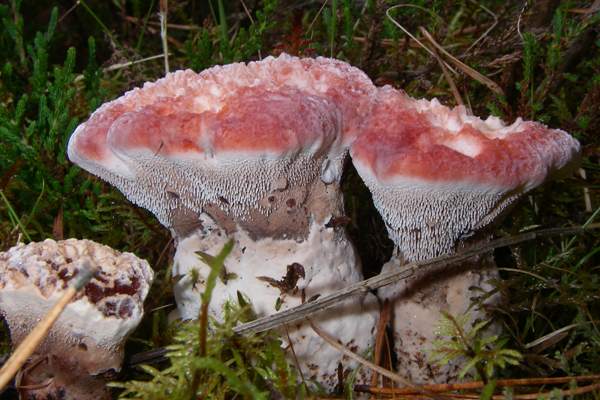
At its best, this is a very beautiful fungus... but unfortunately it is rarely seen at its best and often grows embedded with plant stems and debris. Although variable in shape and colour, fruitbodies of Hydnellum peckii invariably have pinkish tones. Young caps are often (but not always) decorated with bright red liquid droplets that exude from the upper surface. Particularly attractive when solitary, the fruitbodies more often occur in small groups that merge and become fused at the caps and sometimes also along their stems.
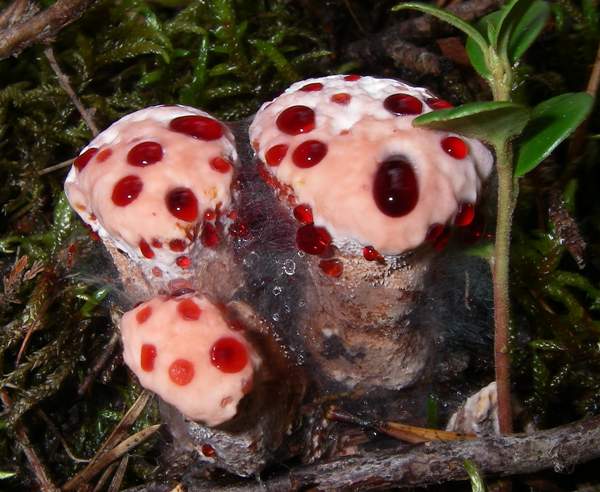
Droplets can also exude from the fertile undersurface, and the effect is sometimes quite stunningly beautiful:
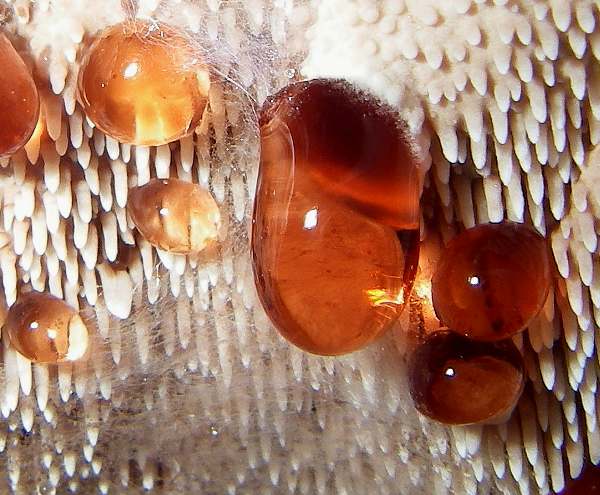
Distribution
The Devil's Tooth is a woodland mushroom rarely if ever found in Britain except in Scotland and then most often in the Caledonian Forest, where in some years it is abundant but still fairly localised. The beautiful specimens shown on this page were seen in Scotland's Abernethy Forest. All official records for this species on the Fungal Records Database of Britain and Ireland (FRDBI) are from Scotland. This hydnoid fungus occurs also in parts of northern mainland Europe and in North America.
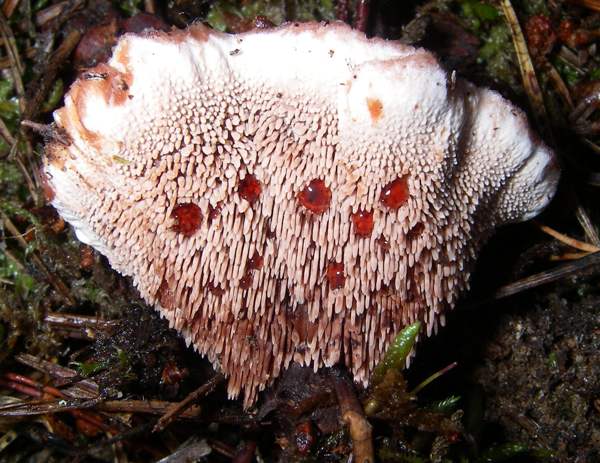
Taxonomic history
Tooth fungi of various kinds can be found in many taxonomic orders, and over the years their classification has changed considerably. This particular fungus was first described in 1912 by American mycologist Howard James Banker (1866-1940), who gave this species its present name Hydnellum peckii.
Synonyms of Hydnellum peckii include Hydnum diabolus, reflecting the common name Devil's Tooth, Calodon peckii, and Hydnum peckii. This rare (in Britain and Europe; less so in the USA) fungus has been referred to by several other common names including Strawberries and Cream, Bleeding Tooth Fungus, and Bile Tooth.
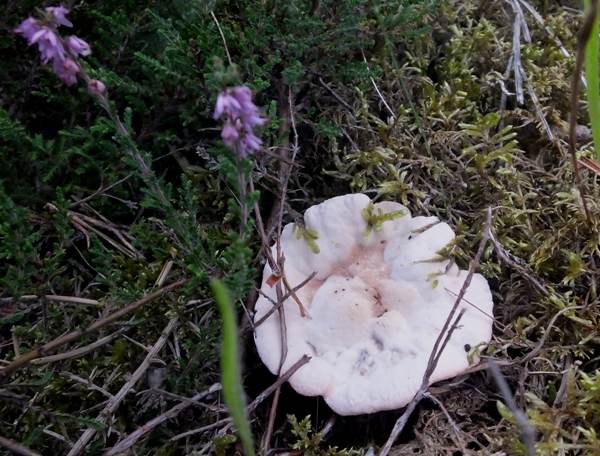
Etymology
Hydnellum, the generic name, is derived from the ancient Greek word hudnon, meaning an edible mushroom; this term was applied particularly to edible truffles. (See, for example, Tuber melanosporum, the Perigord Truffle.)
The specific epithet peckii honours American mycologist Charles Horton Peck (1833-1917) who described nearly 3000 fungi species of North America. The standard abbreviation Peck is used to identify Charles Horton Peck as the author when citing a botanical/mycological name.
Identification Guide
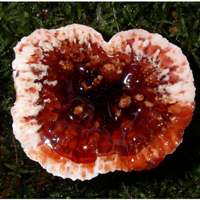 |
Cap3 to 8cm across when fully developed, sometimes round but often oval or multi-lobed; initially shallowly domed or flat topped but with a bumpy surface, becoming slightly funnel-shaped with a thin margin; white or very pale pink, palest near the margin, becoming deeper pink or buff and eventually turning brown from the centre before blackening and decaying. Young caps often exude red liquid droplets; cap flesh is tough and fibrous. Above-ground height 3 to 10cm. |
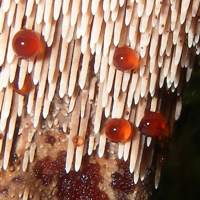 |
Spines1 to 5mm long (shortest near to the cap margin) and less than 1mm in diameter; crowded, decurrent; pinkish, becoming buff later as the spores mature. |
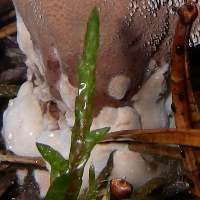 |
StemThe stem of the Devil's Tooth fungus is very variable in size, sometimes as squat as just 0.5cm in height; occasionally as tall as 5 or 6cm but with most of the stem below ground; diameter ranges from 0.5 to 2cm; usually more or less cylindrical but sometimes tapering in towards the base. Pinkish buff like the outer region of a mature cap; coarsely velvety in texture. |
SporesAlmost spheroidal but with a sharp point at one end; 5-5.5 x 4-4.5µm; tuberculate (covered with small, wart-like nodules); inamyloid. Spore printDull brown. |
|
Odour/taste |
No significant odour; taste very hot indeed. |
Habitat & Ecological role |
On soil in coniferous woodland; nearly always with pine trees, with which it is ectomycorrhizal. |
Season |
Late summer and autumn. |
Similar species |
Hydnum ferrugineum is very similar in appearance but its flesh is reported to be mild tasting rather than hot. There are significant hyphal structure differences that are visible only with a high-powered microscope: Hydnellum peckii has clamps on the septa, whereas Hydnellum ferrugineum does not. Hydnum rufescens is tan coloured without concentric zones; its spines are adnate to the stem rather than decurrent. |
Culinary Notes
In common with the other members of the genus Hydnellum, Devil's Tooth is a tough and insubstantial fungus. Needless to say we have no recipe information for this species.
Reference Sources
Fascinated by Fungi, 2nd Edition, Pat O'Reilly 2016, reprinted by Coch-y-bonddu Books in 2022.
British Mycological Society (2010). English Names for Fungi
Dictionary of the Fungi; Paul M. Kirk, Paul F. Cannon, David W. Minter and J. A. Stalpers; CABI, 2008
Taxonomic history and synonym information on these pages is drawn from many sources but in particular from the British Mycological Society's GB Checklist of Fungi.
Acknowledgements
This page includes pictures kindly contributed by Stevie Smith.
Fascinated by Fungi. Back by popular demand, Pat O'Reilly's best-selling 450-page hardback book is available now. The latest second edition was republished with a sparkling new cover design in September 2022 by Coch-y-Bonddu Books. Full details and copies are available from the publisher's online bookshop...

